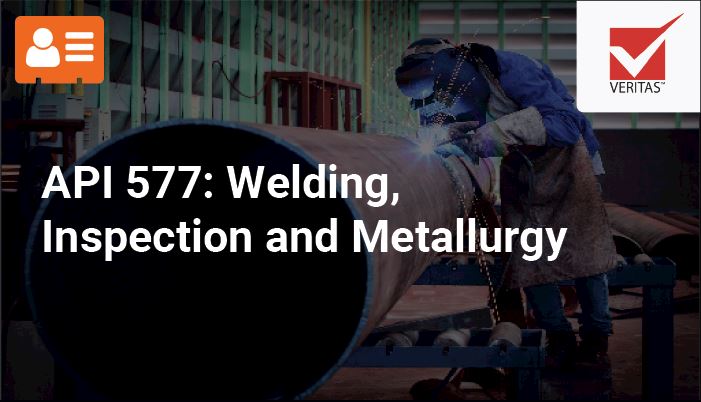The Relevance of Thorough Welding Assessment in Industrial Applications
In the world of industrial applications, the importance of precise welding assessment can not be overemphasized. As we check out the multifaceted advantages of attentive welding assessments, one have to consider the wider effects on safety and security, dependability, and cost-effectiveness in commercial procedures.
Enhancing Architectural Integrity
When it comes to welding inspection in commercial applications, improving architectural integrity is extremely important. The primary objective of welding examination is to make sure that the welds are qualified of bearing the anticipated stress and anxieties and lots they will encounter in solution.
The relevance of maintaining architectural stability in bonded structures can not be overstated. Improperly implemented welds can bring about catastrophic failures, resulting in pricey repairs, downtime, and even endangerment of human lives. Consequently, examiners play a vital role in the lifecycle of commercial components, offering guarantee that the welding process supplies the desired stamina and longevity.
Additionally, progressed modern technologies, such as phased variety ultrasonic testing and electronic radiography, deal boosted capacities in discovering potential weaknesses, enabling restorative procedures before concerns escalate. By prioritizing the stability of welds via thorough inspection, markets can make sure operational effectiveness and prolong the long life of their infrastructure.
Determining Welding Defects
Identifying welding problems is an essential aspect of making sure the safety and security and reliability of bonded frameworks. Typical welding issues include porosity, cracks, incomplete fusion, and damaging.
Competent inspectors utilize both aesthetic examination and advanced non-destructive testing (NDT) approaches, such as ultrasonic or radiographic testing, to spot these problems. The prompt identification and rectification of welding defects are necessary to maintain the architectural stability and long life of commercial components.
Ensuring Compliance Standards
Conformity with established criteria, such as those provided by the American Welding Society (AWS) and the International Company for Standardization (ISO), guarantees that welds fulfill minimal safety and top quality requirements. These requirements incorporate a broad array of criteria, consisting of product specifications, welding treatments, and credentials of welders.
Regular audits and assessments are crucial in confirming compliance. Assessors need to possess a comprehensive understanding of the pertinent criteria and be experienced at utilizing numerous non-destructive testing (NDT) methods to assess weld high quality. By making certain that welding methods align with compliance requirements, companies reduce the threat of non-conformity, which can cause legal obligations and security hazards.
In addition, preserving conformity not just safeguards structural integrity yet likewise improves a business's reputation in the market. Stakeholders and clients are more probable to depend on firms that constantly show a dedication to top quality and safety and security through strenuous compliance. Hence, making sure conformity criteria is an essential part in the successful application of welding in commercial applications.
Minimizing Maintenance Expenses

The application of advanced non-destructive screening (NDT) approaches, including ultrasonic, radiographic, and magnetic particle examinations, enhances the ability to identify subsurface flaws without jeopardizing the architectural integrity of elements. By employing these strategies, industries can significantly extend the life span of their devices, decreasing downtime and the connected financial problem of upkeep tasks.
In addition, a robust welding inspection program supports the optimization of upkeep schedules, changing from responsive to predictive upkeep strategies. This aggressive strategy not just stops unexpected failures yet also enhances resource allocation, making certain that upkeep efforts are concentrated and efficient. Eventually, the investment in rigorous welding evaluation is balanced out by the substantial cost savings recognized via lowered maintenance needs, contributing favorably to the overall operational performance of industrial business.
Improving Security Steps
Welding evaluation plays a vital duty in this context, as it ensures that all connections and joints satisfy strict safety and security requirements. Comprehensive evaluations assist identify problems such as fractures, porosity, or incomplete combination that could endanger structural integrity.
Approaches like ultrasonic screening, radiographic screening, and magnetic particle examination enable for comprehensive exam without damaging the structure. Executing a durable top quality control system that includes normal training for welders and examiners guarantees adherence to developed security criteria.
Last but not least, click to investigate promoting a society of safety and security within the organization highlights the significance of complete welding assessments. Encouraging open interaction and collaboration amongst examiners, welders, and engineers adds to a common dedication to safety and security excellence. Welding Inspection visit this site Madison. In doing so, industries can guard their operations, protect personnel, and maintain public trust

Final Thought
Comprehensive welding assessment is crucial in commercial applications, significantly enhancing structural honesty and reliability. Ultimately, the thorough execution of welding examinations plays a critical duty in keeping functional effectiveness and safety in commercial settings.
As we explore the multifaceted benefits of persistent welding examinations, one have to take into consideration the broader implications on safety and security, reliability, and cost-effectiveness in industrial operations.
The primary objective of welding examination is to make sure that the welds are capable of bearing the expected anxieties and lots they will experience in solution. Reliable welding inspection plays an integral function in minimizing these costs by ensuring the integrity and long life of welds, thus mitigating the threat of premature failures.Complete welding assessment is crucial in commercial applications, significantly enhancing architectural stability and reliability. Inevitably, the thorough execution of welding examinations plays a critical function in keeping functional performance and safety in industrial settings.